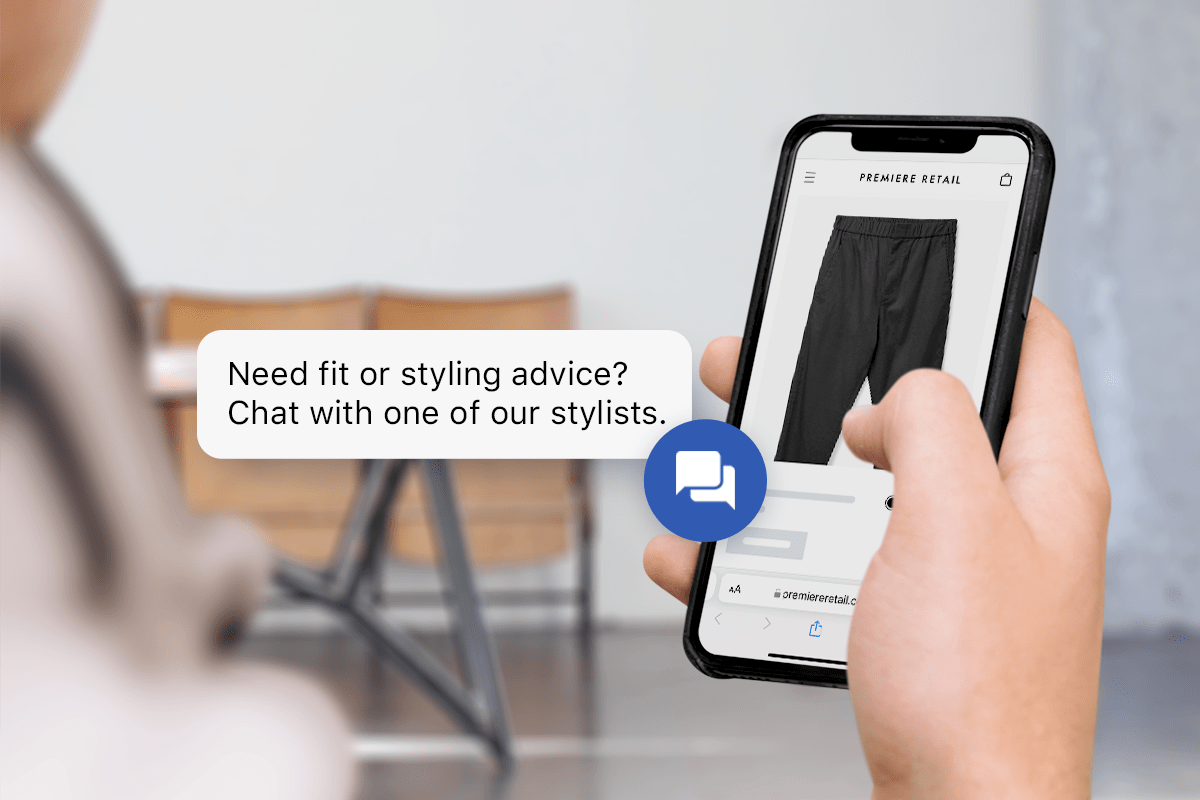Retailers have had a tough few years. The pandemic threw businesses into a tailspin. If you’re like the rest of the industry, you either had to build an online shopping experience from scratch or seriously ramp up your web-store capabilities.
This meant your customer satisfaction took a hit.
E-tailers were still struggling in 2021. According to the American Customer Satisfaction Index, customer satisfaction with online retailers dropped 1.3% in 2021—more than double the 0.5% decrease across the retail industry.
At the same time, customer expectations increased. And online retailers have a harder time building brand loyalty. If customer expectations aren’t met, Microsoft reports that 58% of customers show little hesitation in severing the relationship.
So what’s an e-tailer to do to improve online retail customer satisfaction?
Embrace messaging.
Even if you’ve adopted various forms of business messaging, there are many ways to elevate your strategy and improve your customer satisfaction in retail.
Read on to see why messaging has become a vital part of online retail, along with 6 ways to use it to improve customer satisfaction.
Why messaging is essential in online retail.
Messaging is changing the way online retailers do business, but it’s more than a box that needs checking. You shouldn’t just roll out an SMS/text messaging or WhatsApp program and staff it with customer service reps from your contact center. To make the most of it, you need a well-developed strategy.
Text messaging especially has the potential to improve the online shopping experience. Four out of 5 customers send a text message on a daily basis, and nearly half of consumers prefer messaging as a means to connect with businesses. Your customers are telling you that they want to interact via messaging—why not listen?
Here at Quiq, we’ve seen rapid adoption of messaging by online retailers. Brands like Overstock, Pier 1, and Tailor Brands have experienced tangible benefits, including more natural customer engagement, lower service costs, and a reduced workload.
6 ways to improve online retail customer satisfaction with messaging.
E-tailers struggle with customer satisfaction. There are some aspects out of your control (ahem: shipping and manufacturing anytime after March 2020), but there are things you can do to alleviate your customers’ struggles.
Messaging is a big part of that. Having reliable communications—and using them strategically—helps promote customer satisfaction. Here are 6 ways you can use messaging to improve your online shopping experience.
1. Help shoppers find the perfect product.
The biggest argument against online shopping for years has been the lack of personalized customer service. Shoppers can’t ask for recommendations (and algorithms hardly make up for it), sizing help, or general advice.
Messaging helps your team close that gap (along with the support of chatbots and AI). Yes, it’s great for post-purchase interactions. But customers also want help before they checkout. In fact, nearly two-thirds (64%) of customers use messaging when they want to make a purchase or a booking/reservation, according to our Customer Preference for Messaging report.
Quiq lets you help customers when they need it most. You can provide the on-demand service they need while shopping your site, viewing your products on social media, or browsing your app. You’re giving them that in-store, personalized experience while they’re going about their day. And it doesn’t hurt that helping them before they make a purchase can boost sales.
2. Provide transparent interactions.
When customers call your support line, are they greeted with a “This call may be recorded” message? That’s a great tool for your business, but what about the customer? Once they end the conversation, they have no record of the interaction. They can’t refer back to it later, check to make sure they heard everything correctly, or prove that the conversation even existed. Yes, some companies offer a confirmation number, but that does little to help your customer access the information.
Even popular web chat solutions can be session-based—meaning when the session is over, the conversation disappears. Customers can’t refer back or naturally start the conversation back up when a related question pops up.
We know the importance of asynchronous communication. Customers aren’t always available to respond instantly, and sometimes new questions appear once their first ones have been answered. That’s why Quiq’s web chat conversations are persistent—they start right where they left off. Plus, customers can request to have their web chat transcripts emailed to them.
You get an even longer messaging history on channels like SMS/text and Facebook Messenger.
Mobile messaging adds an additional layer of transparency. Message history can stretch back even further than the last conversation on SMS and Facebook Messenger, giving the customer access to older messages and more conversation details.
3. Staff for multiple messaging channels.
An omnichannel messaging strategy can greatly enhance your online customer experience—when it’s done right. Customers frequently ping-pong across platforms. Zendesk’s 2022 CX Trends report found that 73% of customers want the ability to start a conversation on one channel and pick it back up on another.
Yet, it’s all too easy to add messaging channels and hand them over to your call center agents. While it’s feasible to cross-train your customer support team on both phones and messaging, there’s a little more to it than that.
First, you need to ensure you have available staff to cover multiple messaging channels. Asynchronous messaging does save time over traditional phone calls. But if your team is already stretched thin, adding additional channels will just feel like a burden. Plus, we all know that customers hate to wait.
Try assigning staff members to your messaging channels. While Quiq clients can serve customers on the platform the customers prefer, it takes a trained and available support team for a great omnichannel experience.
4. Reduce wait times.
Speaking of waiting—customers hate it. While you might think the pandemic has made customers more patient and understanding, the opposite is true. Frustrated customers want things to return to “normal” and have higher expectations of all business—e-tailers included. According to Zendesk, 60% report that they now have higher customer service standards after the pandemic.
And with 61% of customers willing to switch brands after just one bad experience, all it takes is one surge in call traffic to create call center chaos and cause you to lose business.
Messaging helps smooth the peaks of inbound support requests when you need it most. Since agents can respond to messages at different speeds, they can handle multiple inquiries at once. A message doesn’t require their full attention for a fixed amount of time. As a result, Quiq clients report work time is often reduced by 25–50%.
5. Delight your visually-driven audience.
Why spend 5 minutes describing a problem when you can take a picture of it in 5 seconds? Phone calls only give you one way to interact with your customer, and emails are too slow for problems that need immediate attention.
Rich messaging is the next step to improving your customer service experience. Found in Apple Messages for Business, Google’s Business Messaging, and more, rich messaging amplifies your customer conversations. From GIFs to images to videos, there are plenty of features to engage your audience visually.
You can even take it to the next level and build an entire customer experience with rich messaging. Process secure transitions, schedule appointments, and send reminders, all through messaging.
Improve your customer satisfaction and boost engagement with these advanced features that are sure to delight shoppers.
6. Entice customers to come back.
Remember those high customer expectations? Unfortunately, customers are quick to switch brands—which means you need to consistently give them the best online shopping experience.
It doesn’t stop at the sale. A good messaging strategy includes post-purchase engagement to encourage customers to come back. While email is currently the preferred method for online retail, it comes with low open rates and even lower click-through rates.
Instead, lean into outbound text messaging for post-purchase communications. Here are a few easy examples to get started:
- Send an order confirmation
- Share a shipment tracking link
- Ask for a product review
- Send a special discount code
- Notify them when similar products go on sale
- Ask them to join your rewards program
With nearly a 100% read rate, outbound text messaging is a more engaging way to connect with customers.
Messaging is the way to customer satisfaction.
Online retailers face many challenges, but engaging with customers shouldn’t be one. Messaging is already helping many online retailers establish a stronger relationship with their customers by tackling common shopper struggles. For many retailers, adopting a messaging platform gave them a customer-centric way to chat with their shoppers.
Messaging has become a vital part of the online shopping experience, and implementing these smart strategies will help skyrocket customer satisfaction. And Quiq is there to help.






